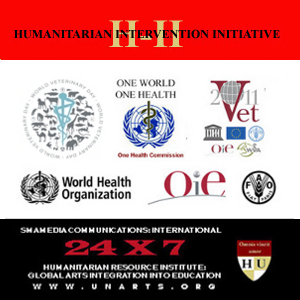7 April
2011
The
country's nuclear safety agency said a small level of radioactive
iodine and caesium particles were reported in the rain falling on the
island of Jeju off the country's south coast but it was not enough to
cause public health concern.... The Korea Institute of Nuclear Safety
(KINS) said it expected to find radioactive materials since iodine and
cesium particles have been floating in the air for the past three
weeks. "Rain will pick up such particles as they fall from the sky,"
Yonhap quoted the institute as saying. -- Some South Korean schools close over radioactive rain
concerns: Reuters Alertnet, 7 April 2011
Such
evidence is a reference point for atmospheric
contamination impacting the entire geographical region. Of
greatest concern are reports of confirmed atmospheric spread of Cesium.
Every
United Nations member country has the responsibility to report accurate
information regarding the spread of toxic, infectious or otherwise
hazardous materials that constitute a public health emergency of
international concern. See: World Health
Organization: Revised International Health Regulations. PDF
International
public health discussions transition to Bioaccumulation. See: Radionucleotides: Ecological Risk Analysis:
Guidance,
Tools and Applications: Oak Ridge National Laboratory.
Please note the following background discussion "International
Biosecurity: Protecting Agricultural and Public Health Infrastructures."
----------------------------------------------------
6 April
2011
From: Stephen M. Apatow
Founder, Director of Research & Development
Humanitarian Resource Institute
Humanitarian University Consortium Graduate Studies
Center for Medicine, Veterinary Medicine & Law
Phone: 203-668-0282
Email: s.m.apatow@humanitarian.net
Internet: www.humanitarian.net

Subject: International
Biosecurity: Protecting Agricultural and Public Health Infrastructures
On 2011 March 11 05:46:23 UTC there occurred a magnitude 9.0 earthquake
near the east coast of Honshu, Japan. [1] The earthquake was followed
by a tsunami that devastated the northern pacific coastal region [2]
and eleven of Japan's nuclear reactors automatically shut down. [3]
On March 12,
2011, [4] failure of the cooling system at Tepco's Fukushima No 1 power
plant, prompted emergency protocols, as evidence of core damage was
suspected due to environmental detection of Cesium. [5] On 15
March 2011, following the evacuation of teams from the
Fukushima plant in Japan points, the international emergency management
community was called to begin discussions associated with containment
and control of this radiological emergency,
that presented a threat to all countries in the region and the United
States
through the Humanitarian Resource Institute International Disaster
Information
Network. [6]
For close to two weeks, teams in Japan continued to work toward
containment without an organized international team to assist emergency
operations. During this period, we observed uncontrolled global
environmental contamination
with Iodine 131 [7] with the United Nations' International Atomic
Energy
Association reporting radiation levels 1,600 times above normal in
seawater,
12 miles from the Fukushima plant on 22 March 2011. [8] On 5
April
2011, seawater samples taken near the facility validated contamination
with radioactive iodine at 7.5 million times the legal limit
and radioactive
cesium at 1.1 million times the legal limit. [9]
The potential for devastation of the environmental, agricultural
and public health infrastructure in the United States, by natural
or man made disasters, requires contingency planning measures
that support surveillance, containment and control, through
collaboration with all members of the international community. For your
reference I have re-published the paper "Agricultural Security and
Emergency Preparedness: Protecting One of America's Critical
Infrastructures" [10] through Pathobiologics International and the
Humanitarian University Consortium.
References:
1. USGS: Magnitude 9.0 - NEAR THE EAST COAST OF HONSHU, JAPAN: 2011
March 11 05:46:23 UTC. Url: http://earthquake.usgs.gov/earthquakes/recenteqsww/Quakes/usc0001xgp.php
2. Map: Impact of Japan tsunami and earthquake: CNN. Url: http://www.cnn.com/SPECIALS/2011/japan.quake/map/
3. Japan's nuclear reactors shut down after earthquake: Wired, 11 March
2011. Url: http://www.wired.co.uk/news/archive/2011-03/11/japan-earthquake-nuclear-reactors
4. Japan battles to stave off possible nuclear meltdown: Guardian UK,
12
March 2011. Url: http://www.guardian.co.uk/world/2011/mar/12/japan-tsunami-nuclear-meltdown
5. Radioisotope Brief: Cesium-137 (Cs-137): CDC: http://www.bt.cdc.gov/radiation/isotopes/cesium.asp
6. International Disaster Information Network:
Humanitarian Resource Institute. Url: http://www.humanitarian.net/idin
7. Radioisotope Brief: Iodine-131 (I-131): CDC: http://www.bt.cdc.gov/radiation/isotopes/iodine.asp
8. Japan says high seawater radiation levels are no cause for alarm,
CSM, 22 March 2011. Url: http://news.yahoo.com/s/csm/20110322/wl_csm/371407
9. Japan's ocean radiation hits 7.5 million times legal limit: LA
Times: 5 April 2011. Url: http://www.latimes.com/news/nationworld/world/la-fg-japan-nuclear-20110406,0,2697428.story
10. Agricultural Security and Emergency Preparedness: Protecting One of
America's Critical Infrastructures. Stephen M. Apatow, Biodefense
Threat Analysis Discussion Paper ASEP-2011-4, Pathobiologics
International, April 2011. Url: http://www.pathobiologics.org/btac/ref/ASEP-2011-4.html
|